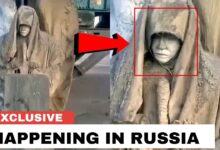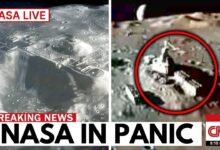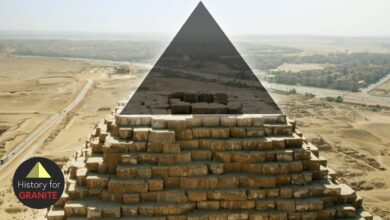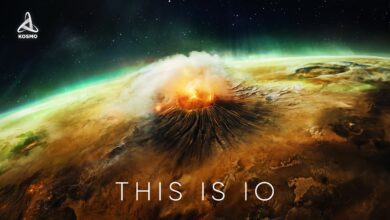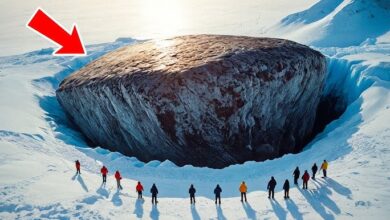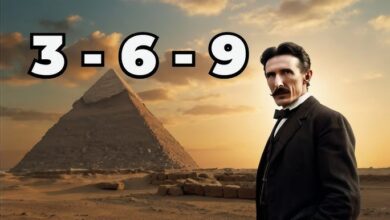Göbekli Tepe and the Prophecy of Pillar 43 | Apocalypse and the Vulture Stone
We descend from an ancient civilization that mastered technology, mapped the cosmos, and understood nature. Our ancestors traveled the world, built massive structures, and shared governance and religious beliefs. Around 14,500 years ago, this global superpower collapsed due to uncontrollable changes and a cataclysm. Everything and almost everyone vanished in less than a week. The survivors built monuments not to honor gods or kings but as warnings: danger is coming again, and our civilization may end as it did before. Big archaeology and world governments want to keep this story hidden because they can’t prevent the coming danger.
In 1994, German archaeologist Klaus Schmidt discovered Gobekli Tepe in Turkey. The site, built around 11,600 years ago, defies the official story of human history. It features massive stone enclosures aligned with the star Sirius, built by people who should not have had the skills or tools to do so. The advanced carvings on the pillars suggest a sudden leap in knowledge, leading to speculation that an older, advanced civilization might have existed before the last Ice Age. This civilization might have taught early humans astronomy, mathematics, and engineering.
Pillar 43, known as the Vulture Stone, depicts a cataclysmic event tied to the Younger Dryas period, about 13,000 years ago. It shows a star map indicating a comet impact that changed Earth’s climate, causing a rapid melting of ice sheets and a devastating cataclysm.

This transcript seems to be part of a discussion on ancient civilizations, including Göbekli Tepe and other archaeological sites, and their connections to catastrophic events like the Younger Dryas period. Here’s a brief summary of the key points:
1. **Göbekli Tepe and Catastrophic Events**:
– Pillar 43 at Göbekli Tepe is believed to depict giant waves, possibly tsunamis from the Younger Dryas impact event.
– Pillar 56 also shows waves and fleeing animals, while Pillar 18 is interpreted as a plea for help, potentially referencing the impact event.
– The site is suggested to be centered on the constellation Taurus, linking it to the idea that it might have recorded celestial events.
2. **The Younger Dryas Impact Hypothesis**:
– The Younger Dryas period is associated with a massive comet impact, which fragmented into smaller comets, leading to catastrophic events.
– The annual Taurid meteor shower, which intersects Earth’s orbit, is a remnant of this debris field.
3. **Karahan Tepe and Other Sites**:
– Karahan Tepe, discovered in 2019, is thought to have been settled before Göbekli Tepe and shows signs of a structured society, unlike the singular religious or observatory function of Göbekli Tepe.
– The discovery of additional sites like Tasler and Banuk Tarla suggests a larger, sophisticated network of settlements, challenging previous notions of primitive societies in the region.
4. **Advanced Ancient Civilizations**:
– Sites like Banuk Tarla show evidence of advanced technology, including sewer systems and intricate beadwork, indicating a high level of organization and specialization.
– There is evidence of sophisticated knowledge and craftsmanship, challenging the idea that such advanced skills appeared suddenly after the Younger Dryas.
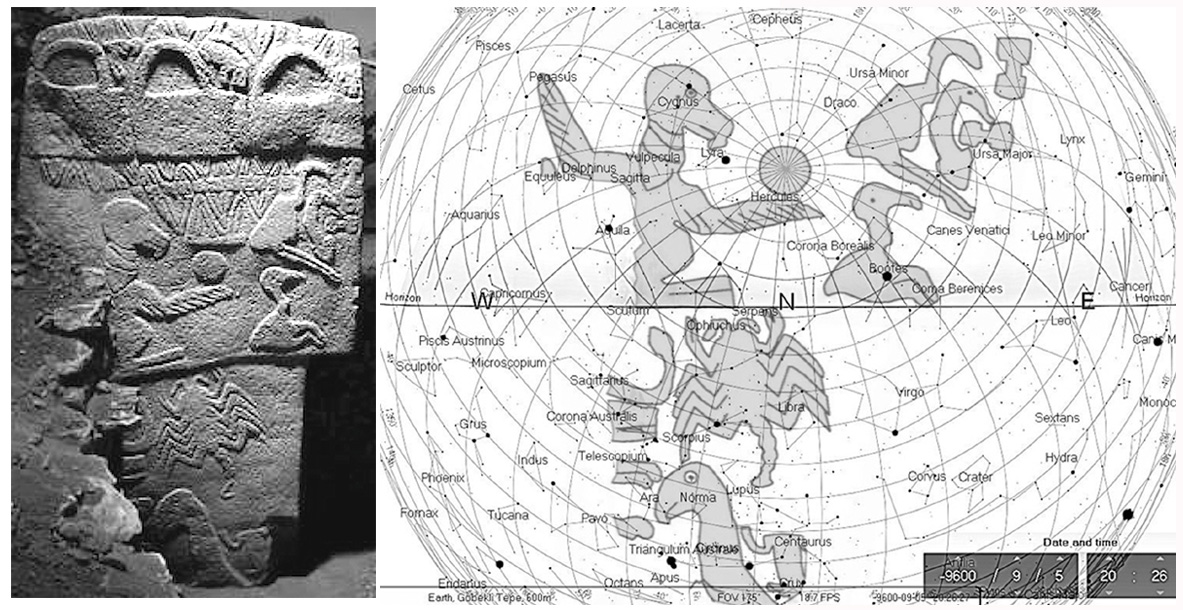
5. **Revising Historical Understanding**:
– The transcript critiques mainstream archaeology for underestimating the technological capabilities of ancient civilizations and for revising their theories in light of new evidence.
– Examples include the Mayan civilization’s advanced road systems predating the Romans and the complex network of ancient civilizations like the Maya and the Sumerians.
6. **Flood Myths and Advanced Civilizations**:
– Many cultures have flood myths, suggesting a historical basis for widespread flooding events.
– Legends of advanced civilizations like Atlantis, Loria, and Mew are mentioned, suggesting they were highly advanced societies that existed around 9600 BC.
7. **Global Flood Myths**: Many ancient cultures share stories of a great flood, where survivors emerge to find primitive societies and impart civilization. These include figures like Hindu Matsya, Mesopotamian Oannes, and others who help restart civilization after the flood.
8. **Agricultural and Technological Advances**: Post-flood, agriculture rapidly develops, and megalithic structures appear almost overnight. Theories suggest this knowledge came from survivors of a previous, advanced civilization.
9. **Sirius and Cultural Knowledge**: Every ancient culture refers to Sirius, the brightest star, as a dog or wolf, suggesting a shared or transferred knowledge.
10. **Göbekli Tepe and Other Ancient Sites**: Göbekli Tepe, with its elaborate carvings and monumental structures, is thought to be deliberately buried around 10,000 years ago, possibly to preserve or hide its significance. Other sites like Çatalhöyük and Karahan Tepe predate Göbekli Tepe, indicating an evolution of technology rather than a sudden appearance.
11. **Younger Dryas Impact Hypothesis**: Evidence of abrupt cooling and potential impacts around 13,000 years ago coincides with the end of the Younger Dryas, suggesting a catastrophic event that might have influenced the rise of new civilizations.
12. **Potential Catastrophic Events**: The excerpt ends with a dramatic scenario of a future catastrophic event, comparing it to historical meteor showers and their potential impact on civilization.:
### 13. **Colisión e impacto inmediato**
– **Punto de impacto:** Si un cometa o asteroide choca con la Tierra, el área alrededor del punto de impacto quedará completamente destruida. La nube de polvo y roca caliente del impacto podría oscurecer el cielo y provocar lluvia ácida.
– **Onda de choque:** La colisión crea ondas de choque extremadamente poderosas que provocan terremotos que se extienden por todo el mundo. Estos terremotos pueden ser tan fuertes que colapsan grandes estructuras y provocan una serie de erupciones volcánicas.
### 14. **Terremotos y Volcanes**
– **Sistemas de fallas:** Los grandes sistemas de fallas, como San Andrés, la zona de subducción de Cascadia y la zona sísmica de Nuevo Madrid, pueden operar simultáneamente, provocando una serie de poderosos terremotos y erupciones volcánicas en una amplia zona.
– **Efectos a largo plazo:** Estos terremotos no solo destruyen ciudades sino que también cambian la estructura de la corteza terrestre, creando hundimientos y colapsos.
### 15. **Huracán y viento**
– **Vientos súper fuertes:** Una tormenta con vientos de 1000 mph que destrozarán todo lo que hay en el suelo. Estos vientos arrastrarán objetos, destruirán las estructuras restantes y crearán una “licuadora de alimentos” gigante.
– **Impacto estructural:** Es posible que queden estructuras sólidas, como las de piedra, pero la mayoría de las demás estructuras y objetos se convertirán en polvo.
### 16. **Impacto en la Biosfera**
– **Colisión oceánica:** Si la colisión ocurriera sobre el océano, crearía un tsunami gigante, de hasta 1,5 millas (1,5 km) de altura y que se movería a 500 mph. Este tsunami arrasará con todo lo que hay en la costa y creará olas secundarias de cientos de pies de altura.
– **Abstinencia de luz solar:** El impacto liberaría grandes cantidades de polvo y material a la atmósfera, bloqueando la luz solar y provocando una caída de la temperatura global, provocando el colapso del ecosistema y la cadena alimentaria.
### 17. **Huellas Históricas y Arqueológicas**
– **Rastros antiguos:** Es posible que civilizaciones antiguas hayan sido destruidas por eventos similares, y sus rastros pueden estar enterrados bajo miles de pies de barro. Varias leyendas y textos antiguos, como la Biblia y las epopeyas indias, describen estos acontecimientos.
– **Investigación arqueológica:** La investigación arqueológica muestra que puede haber rastros de civilizaciones antiguas destruidas por eventos de meteoritos o cometas.
### 18. **Advertencias y precauciones**
– **Observando desde la NASA:** La NASA y otras agencias espaciales monitorean los objetos cercanos a la Tierra para predecir y prevenir riesgos de colisión. Aunque la posibilidad de una colisión importante es pequeña, estas agencias verifican continuamente para minimizar el riesgo.
En resumen, este escenario describe un apocalipsis extremadamente brutal en el que toda la Tierra queda profundamente perturbada y todas las civilizaciones pueden ser aniquiladas. Esta es una advertencia sobre el peligro potencial proveniente del espacio y la necesidad de vigilar de cerca los objetos que podrían causar un desastre.

